Introduction
Conservation of maize stovers
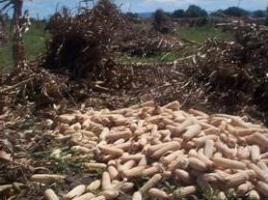 |
| Harvesting maize at dry grain stage widely practiced. |
|
© J.O Ouda, Kenya
|
Maize is the third most produced grain after wheat and rice but leads in crop fodder production both globally and in Africa. Annual maize production have been estimated to be 1816 and 340 million tonnes in the world and Africa, respectively. Maize is largely grown and left to dry to less than 20% grain moisture content before harvesting. The dry grain is a widely used staple in tropical regions. In Africa, many communities differently prepare 'porridge' and 'cakes' from maize meal e.g. 'Ugali', 'Fofo', 'Kita' and 'Pap' which are popular in East, West, North and South Africa, respectively.
 |
| Maize harvesting at grain milk stage suitable for boiling and roasting as human food |
|
© J.O Ouda, Kenya
|
Harvesting maize at grain milk stage for human food (roasting and boiling) is also popular. Stovers harvested at grain milk are greener and more appealing to ruminants, hence generally have high palatability. More importantly, they have been shown to have higher nutritive quality due to lower fibre content as compared to stovers harvested at later maturity stage.
Given that maize stover is potentially an important source of roughage for dairy cattle production, improvement in their utilization is expected to result into considerable positive impact on the overall productivity.
Tips for good maize stovers conservation
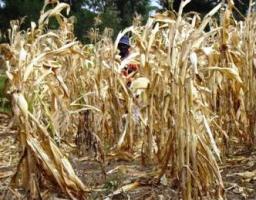 |
| Maize ready for harvest showing high proportion of leaves. |
|
© J.O Ouda, Kari, Kenya
|
1. The leaf is the most nutritious component of maize stovers hence it is important to prevent loss of leaves in the process of conservation.
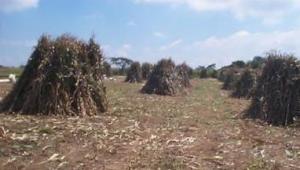 |
| Maize stovers conservation in the field for utilisation by livestock. |
|
© J.O Ouda, KARI, Kenya
|
2. Maize stovers can be conserved in the field in pyramidal heaps that reduce chances of penetration by rain water and direct sun heat.
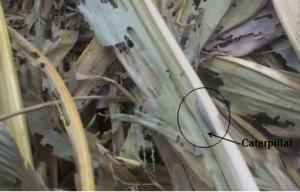 |
| Damaged of conserved maize stovers by pests |
|
© J.O Ouda, Kenya
|
3. There are high chances of pest, especially insects attack on stored maize stovers. Thus there should be regular inspection of the stored stovers and corrective measurements undertaken in case of such damages.
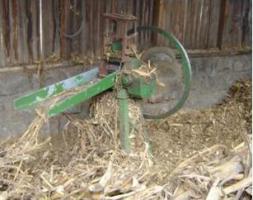 |
| Chaff cutter (can be used to chop maize stovers) |
|
© T.P Lanyasnya, Kenya
|
4. The bulkiness of maize stovers limits intake. Processing the stovers by grinding enhances the intake and prevents losses due to pests.
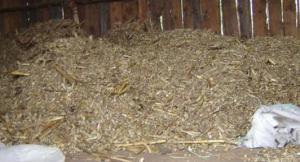 |
| Processing of maize stovers |
|
© J.O Ouda, Kenya
|
 |
| Conservation of maize stovers |
|
© T.P Lanyasunyai, Kenya
|
5. Chopped/grinded stovers should be stored safely with regular inspection to monitor any spoilage e.g. mould growth or rotting.
Information Source Links
- McDonald, P., Edwards, A.R., Greenhalgh, J.F.D., Morgan, C.A., 2002. Animal nutrition (6th Ed.). Pearson Education Ltd., Edinburgh Gate, Harlow, UK.
- Mugo BJ and Gatwiku SW (undated). Livestock fodder from sorghum and sweet potato vines. Kenya Agricultural Research Institute (KARI). Extension brochure, KARI Publications
- Ouda JO (2001). Feeding and care of livestock In: Managing dryland resources. A manual for Eastern and Southern Africa. International Institute for Rural Reconstruction (IIRR). ISBN 9966-9705-2-5.
